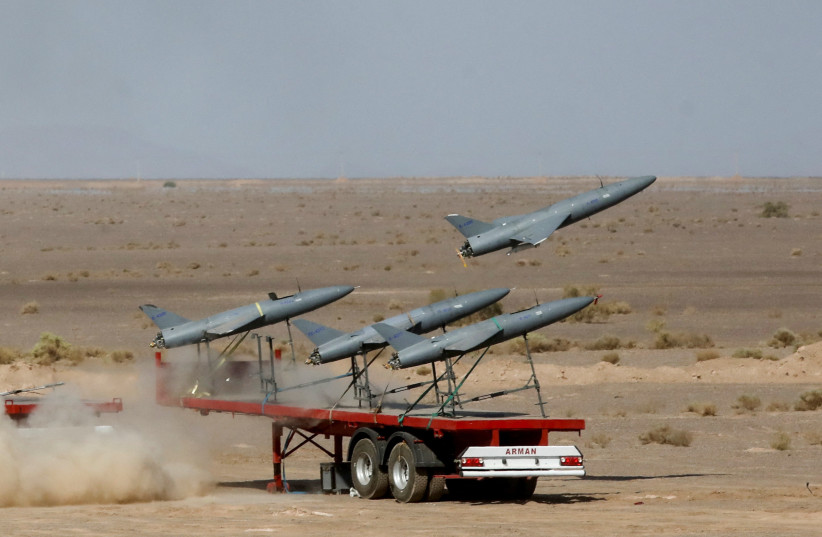Iran’s drone program is facing unprecedented challenges, as both the US and Europe increasingly focus on the supply lines that fuel the Iranian drone war machine with components from China or via Turkey.
A new report at The Guardian published this week sheds light on how more than 50 components of the drones were actually manufactured in Western countries. These troubling details have been, to some degree, known for years, because Iranian drones have been shot down in the past, and their parts have been traced back to the Western suppliers.
What the report sheds light on is how now there is a focus on cutting off the supplies. Iran uses dual-use items to equip its drones, which can include the most minor electrical components or more complex items, such as engines and gyroscopes.
Tehran sends the drones to Russia these days. This is an important market for Iran. Iran wants Russia to acquire its drones so it can produce them on a larger scale and can see how they work in a conventional war. Iran then wants to receive other items in return, such as warplanes from Russia.
The report further notes that, “in a 47-page document submitted by Ukraine’s government to the G7 governments in August, it is claimed there were more than 600 raids on cities using unmanned aerial vehicles (UAVs) containing Western technology in the previous three months.”

The components are used in the Shahed 131 drone and in the Shahed 136. Iran exploits various suppliers, including a Polish subsidiary of a British company, according to the report.
“Among the manufacturers are companies headquartered in the countries of the sanctions coalition: the United States, Switzerland, the Netherlands, Germany, Canada, Japan, and Poland.” A follow-up report says European countries might ban sales to countries that appear to be aiding the program.
The US State Department said on Wednesday that “today, the United States is designating a network linked to the US-designated Iranian Revolutionary Guard Corps (IRGC). This network – comprised of five entities and two individuals based in Iran, the People’s Republic of China (PRC), Hong Kong, Türkiye, and the United Arab Emirates – has been procuring sensitive parts for Iran’s attack-drone program.”
The department further noted that “Iran is supplying Russia with arms, including Shahed-136 UAVs, to support Russia’s illegal war against Ukraine. One of the servomotors procured by the network designated today was recovered in the remnants of a Russia-operated Shahed-136 that was recently shot down in Ukraine.
The United States is determined to take action against those supporting Russia’s war machine, particularly the provision of weapons that target Ukraine’s people and civil infrastructure.”
China and Iran's drones
China has slammed the new focus on its role in the Iranian drone program. “China notes that the United States has included some Chinese enterprises and individuals in the ‘Specially Designated Nationals List’ on the grounds of the so-called development of drones and military aircraft involving Iran, which China firmly opposes,” a China commerce ministry spokesman told state broadcaster CCTV.
Taken together, it is clear that Iran’s drone program is now getting more time in the spotlight from the US and Europe. The problem the West faces in going after the drone program is that Iran is an expert at setting up shell companies and exploiting loopholes to avoid sanctions; it has done this for decades. The components in the drones are also not that hard to find, so Iran can easily create a new company or a new source for them.
The fact that there have been numerous rounds of sanctions on the drone program already illustrates that it may not be effective yet. Iran has also rolled out claims of a new type of kamikaze drone that it claims has a rocket engine. Overall, this shows that Iran is not slowing down, but ramping up the drone threat.
This threat targets the Middle East and Ukraine these days, but may go further afield. Iran, for instance, sent drone models to a defense expo in Serbia, according to recent reports, and it appears to be trying to sell the drones not only in Europe, but also in Asia, Africa and South America.
